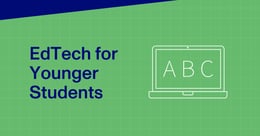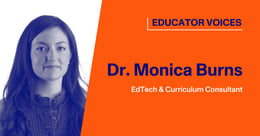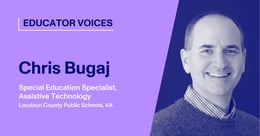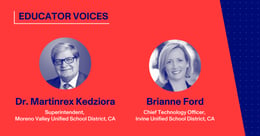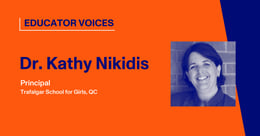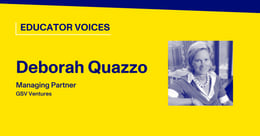
Superintendents Share 3 Equity Priorities for Back to School
In light of new funding, research, and state guidance, districts are moving into a new school year full of opportunities to maximize equity and impact for all.
On June 15, Paper hosted a dynamic panel of superintendents that shared holistic, equitable strategies to meet learning renewal priorities for 2021-2022.
Watch the full recording of the discussion below, featuring:
- Dr. Jon Bartelt, Supt, Bloomingdale School District 13, IL
- Dr. David Negron, Supt, Maywood-Melrose Park-Broadview School District 89, IL
- Dr. Nick Polyak, Supt, Leyden Community High School District 212, IL
- Dr. Bhavna Sharma-Lewis, Supt, Diamond Lake School District 76, IL
→ Watch the webinar recording now
Below are panelists' key considerations and examples for three equity priorities this year:
1. Using comprehensive diagnostic systems to assess and meet diverse needs
2. Extending learning time and enrichment outside of the school day
3. Turning passion into promise with future-readiness support
1. Using comprehensive diagnostic systems to assess and meet diverse needs
When most people think of the word 'diagnostic' or 'assessment' they think of exam papers and pencils. But measuring holistic needs is critical as we approach the 2021-22 school year, especially given declining engagement and striking disparities in students' home environments.
- Knowing that we can't teach our students if we can't reach our students, Diamond Lake 76 has formed invaluable community partnerships (e.g. with churches, hospitals) and used ESSER funds to open up a Community Liaison position to determine academic and socioemotional needs.
- Based on responses to their family surveys, Maywood 98 was able to turn 13 of their facilities into wifi zones to respond to requests for faster, more reliable connectivity — this even led to a dramatic increase in attendance and student activity.
2. Extending learning time and enrichment outside of the school day.
Districts around the nation are exploring ways to increase meaningful learning time with evidence-based interventions such as summer programming and high-impact tutoring. Panelists made it clear that such interventions must be flexible, non-punitive, and not dependent on income. Leaders should also emphasize socioemotional development just as much as learning acceleration this year.
- A lot of students are unengaged, underserved, and overwhelmed with new responsibilities and crises at home. At Leyden 212, instead of making students retake classes or do more online tests, they're providing extended learning opportunities (ELOs) that give students the chance to demonstrate their learning in a way that fits them.
- Bloomingdale 13 is launching a free, non-graded summer school program to increase practice in reading and mathematics — in July, not June, to allow everyone to take a sigh of relief after a taxing school year. They have also partnered with Paper to give students free, 24/7, and unlimited access to high-impact tutoring, so they have help when, where, and how they need it.
- Some families might be too burnt out to participate in summer programming, and many students can actually benefit from experiences outside of school after prolonged social distancing (even a vacation!). Such families at Diamond Lake 76 have the option to just check in remotely with their instructors over the summer. At Maywood 89, alongside traditional summer school programming, they will provide much-needed athletic opportunities with basketball, soccer, golf, and cheer camps.
→ Read About High-Dosage Tutoring: A Path for K-12 Recovery
3. Turning passion into promise with future-readiness support
As we approach another school year, districts will be doing a tough balancing act: Meeting students' current needs, all while preparing them for the uncertain realities of tomorrow.
- As a high school district, Leyden 212 is the "last stop" before students are launched into whatever comes next. To provide as many career pathways as possible for students to explore their passions and receive relevant credentials and guidance, they'll be introducing an 'advisory period' in the fall. High school students will get career-readiness guidance in small groups from a qualified adult. They'll get support throughout their four years, from onboarding into high school to filling out their FAFSAs in senior year.
- Another key component of future-readiness for elementary school districts like Bloomingdale 13 is fostering a sense of civic engagement and community service in young students — it builds socioemotional skills and the mindset that they can and should make a difference.
- Diversifying teaching staff to reflect the student population is a key equity concern. Panelists explained how, if we eventually want our staff to look more like our kids, we need to hire more of our kids to be our staff. Leyden 212 and Maywood 89 have introduced 'golden ticket' systems, in which students that grow up to complete teaching degrees are welcomed back and supported in entering the educational profession.
→ Navigating Federal Funds in 2021: Guide for District Leaders
Parting thoughts
As we enter another school year, we must embrace all opportunities to maximize equity for all. Equity starts with empathy — listening to and assimilating stakeholder voices is a critical aspect of this work.

